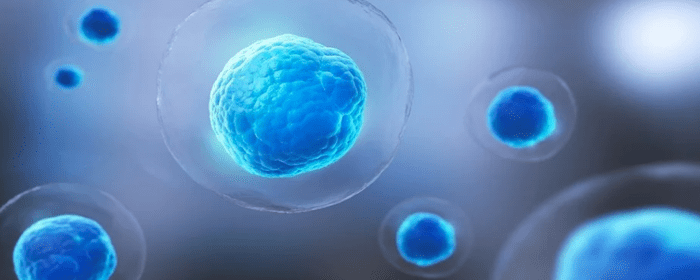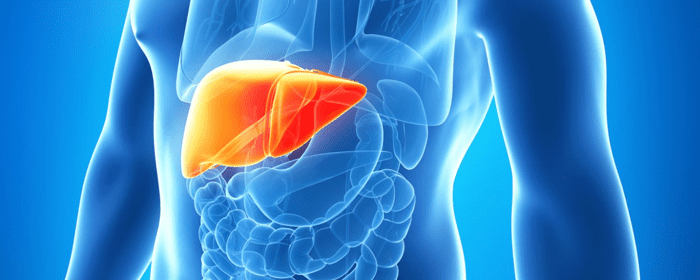
by admin | Oct 25, 2023 | Mesenchymal Stem Cells, Regenerative Medicine, Stem Cell Research, Stem Cell Therapy
Biomedical applications of mesenchymal stem cells (MSCs) in the field of regenerative medicine continue to evolve. Coupled with the rapid development of molecular biology and transplantation techniques, MSC applications have become a central focus of research surrounding regenerative medicine.
Since being discovered nearly 50 years ago, the understanding of various techniques for MSC extractions and the subsequent potential for differentiation has continued to advance.
This review, presented by Han et al., provides a brief overview of MSC extraction methods and their subsequent potential for differentiation and summarizes the future applications and challenges of various MSCs in the field of regenerative medicine.
It has now been well established that MSCs can be isolated from various tissues, including bone marrow, adipose, synovium, and human umbilical cord blood. The general process for MSC extraction involves the isolation of various tissues, digestion to obtain cells, culturing for three to five days, and continuous culturing of adherent cells to the desired passage.
Interestingly, the authors point out that rabbits are the most frequently used animal models for experiments involving cartilage or bone tissue regeneration. Considering this, the authors call for the surface markers of rabbit tissue-derived MSC to receive increased focus and further verification.
Han et al. also discuss the differentiation potentials of MSC types, highlighting that bone marrow-derived MSCs display superior capabilities for differentiation into osteogenesis and chondrogenesis under standard differentiation protocols. They also point out that umbilical cord blood-derived MSCs (UCB-MSCs) demonstrate biological advantages relative to other adult sources, including their capability for longer culture times, larger-scale expansion, and higher anti-inflammatory effects. Considering that differentiation conditions vary based on the type of MSC, the authors highlight that it is becoming increasingly necessary to choose the desired MSC type according to the specific purpose being sought.
MSC-based regenerative medicine has been widely studied and applied to many aspects of the field. This review summarizes several reports concerning the latest preclinical and clinical trials of various MSC types for tissue engineering, most notably the reconstruction of fragile tissue associated with the musculoskeletal system, nervous system, myocardium, liver, cornea, trachea, and skin.
In order to improve the therapeutic effectiveness of MSCs, while also reducing the potential identified risks, the authors suggest reducing excessive cytokines, further exploring the immunomodulatory effects of MSCs, and establishing strict preclinical biosafety testing rules. Additionally, longer and larger controlled clinical trials are required to further determine the safety of MSCs.
While there have been tremendous advances in the field of regenerative medicine, especially as they relate to MSCs, Han et al. share a number of challenges that have to be overcome before the clinical application of MSC therapy, with the primary challenge being the implementation of a standardized method of isolation and culturing for MSCs.
The authors conclude this review by summarizing three distinct properties of MSCs that make them an optimal source of tissue regeneration: their immunoregulatory capacity, paracrine or autocrine functions that generate growth factors, and their ability to differentiate into target cells.
Source: “Mesenchymal Stem Cells for Regenerative Medicine – PMC – NCBI.” 13 Aug. 2019, https://www.ncbi.nlm.nih.gov/pmc/articles/PMC6721852/.

by admin | Oct 11, 2023 | Mesenchymal Stem Cells, Stem Cell Research, Stem Cell Therapy
Mesenchymal stromal cells (MSCs) have repeatedly demonstrated the capacity to limit injury and promote regeneration through signaling and secretion of trophic factors. Considering this, MSCs have been increasingly used as a treatment for a wide variety of injuries and immune-related, infectious, and degenerative diseases.
In this review, Jahromi et al. provide a brief overview of the fate and efficacy of intramuscular (IM) delivered MSCs and identify the gaps that require additional study before IM-delivered MSCs are adopted as a primary treatment of systemic diseases.
Specifically, a recent study has demonstrated significant advantages of using skeletal muscle for the delivery of MSC. While skeletal muscle has been used as a delivery route for myopathic, neurodegenerative, and vascular diseases, these studies have identified 3 main advantages of skeletal muscle MSC delivery.
These advantages include extended dwell time provided by dense muscle fibers that retain the MSCs in situ; high vascular density that provides a conduit for systemic release of MSC trophic factors; and an abundance of tissue that allows for multiple injection sites.
Research has identified two key factors that profoundly affect observed dwell-time variations of 72 hours to 8 months observed in MSCs transplanted in the skeletal muscle; these factors include immune rejection and the methods used for MSC detections. Considering this, the authors point out that allotransplantation provides an advantage since MSCs exhibit low immunogenicity and are expected to evade the immune system.
Although little information on the IM delivery of MSCs currently exists, previously conducted clinical trials demonstrated no therapeutic advantage of using higher doses of MSCs; other studies demonstrated medium doses of MSCs to be more effective than either a lower or higher dose.
While IM-delivery has been shown to be clinically safe and increases the longevity of the secretory activity of the delivered cells, the authors point out that it is important to further evaluate the fate of MSCs post-delivery in skeletal muscle.
Jahromi et al. conclude that the studies reviewed as part of this brief collectively support the notion of broadening the applicability of IM-delivery route from local therapy to the treatment of system disease with multiple studies demonstrating IM-delivered MSCs to be safe and to provide and extended dwell time while remaining secretorily active.
Source: “Concise Review: Skeletal Muscle as a Delivery Route for … – NCBI.” 5 Feb. 2019, https://www.ncbi.nlm.nih.gov/pmc/articles/PMC6477141/.

by admin | Oct 4, 2023 | Mesenchymal Stem Cells, Stem Cell Research, Stem Cell Therapy
Ankylosing spondylitis (AS) is a chronic and progressive inflammatory disease that primarily affects the sacroiliac joints and the spine; in rare cases, AS can also cause issues for the peripheral joints and extra-articular organs, including the skin, eyes, and cardiovascular system.
While there are a number of drugs prescribed to treat symptoms associated with AS, there is currently not a cure for AS nor is there a non-pharmaceutical method for treating the condition and its symptoms.
Considering the potent immune-modulated activity and their ability to inhibit B cell differentiation, T cell activation, and proliferation, researchers have increasingly been exploring the use of mesenchymal stem cells (MSCs) as a potential treatment option for a number of autoimmune diseases.
In this current study, Li et al. evaluated the therapeutic effects of umbilical cord MSC (uMSC) transplantation in patients with AS. This review summarizes the authors’ findings.
Specifically, Li et al.’s study evaluated 5 patients with AS after receiving intravenous transfusions of uMSCs.
After receiving an intravenous uMSC transfusion, the authors reported lower levels of inflammation, slowed progression of AS, and reduced levels of ESR, CRP, and other specific markers indicative of improved spinal functions and spinal movement in subjects with AS.
Considering these findings, the authors conclude that uMSC transplantation is feasible and safe and induces limited side effects.
The authors of this study also highlight a number of limitations, including the low number of patients, limited statistical analysis, and lack of a control group that did not receive an infusion.
In light of these results, Li et al. call for future studies using a larger cohort of patients with AS to enable the systematic evaluation of uMSC in treating symptoms of AS.
Source: “Infusion of umbilical cord mesenchymal stem cells alleviates … – NCBI.” 27 Jun. 2017, https://www.ncbi.nlm.nih.gov/pmc/articles/PMC5526206/.

by admin | Sep 27, 2023 | Mesenchymal Stem Cells, Stem Cell Research, Stem Cell Therapy, Wharton's Jelly
Mesenchymal stem/stromal cells (MSCs) continue to be viewed as a source of cell therapy applications due to their immunomodulatory and anti-inflammatory effects and because of their ability to stimulate angiogenesis. In MSCs, these benefits are mainly attributed to the secretion of factors.
Despite MSCs’ known and favorable proliferation levels, multipotency, and immune response regulation, there are other important variables that should be considered when developing cell therapy applications, including the source of MSCs.
Considering that MSCs collected from different tissues can form heterogeneous cellular populations and manifest tissue-specific functional differences, the source of MSCs should be of primary consideration when developing new therapeutic approaches.
In this review, Paladino et al. present a review of recent research related to the therapeutic application of Wharton’s jelly MSC (WJ-MSC) harvested from umbilical cords and how these cells affect immune responses in comparison with other sources of MSCs.
Bone marrow-derived stem cells BM-MSCs have long been considered the favored source of MSCs and are the most used source of MSCs in clinical research. However, BM-MSCs have a history of showing mixed results and are not always recommended for use due to the invasive and painful process used to obtain the MSCs.
While other alternative sources, including adipose tissue, dental pulp, and menstrual blood, are available, WJ-MSCs are considered an easily accessible source of MSCs that are comparable to BM-MSC and have suffered less environmental interference and demonstrate higher proliferative capacity than other sources.
One of the most promising benefits associated with MSC therapy is the potential to treat inflammatory or autoimmune diseases, including systemic lupus erythematosus, type 1 diabetes, and multiple sclerosis.
Studies using WJ-MSC in this capacity have shown their robust immunomodulatory potential. Specifically, the authors of this review reference a number of studies using various sources of MSCs, including WJ-MSCs that demonstrate immunomodulatory potential similar to other MSC sources. Studies also demonstrate that WJ-MSC is a better suppressor of specific inflammatory factors, including mixed lymphocyte reaction, and possesses higher levels of IL-17A (a key mediator in the treatment of graft-versus-host disease) than MSCs collected from other sources.
Paladino et al. conclude that the available literature indicates that WJ-MSCs possess immunological features comparable to MSCs from other sources, including bone marrow-derived MSCs. The authors also call for further study to identify the best therapeutic indications for WJ-MSCs as a substitute for other sources of MSC, including BM-MSC.
Source: “The Immunomodulatory Potential of Wharton’s Jelly Mesenchymal ….” 11 Jun. 2019, https://www.hindawi.com/journals/sci/2019/3548917/.

by admin | Sep 13, 2023 | Mesenchymal Stem Cells, Regenerative Medicine, Stem Cell Research, Stem Cell Therapy
Liver disease accounts for nearly two million deaths annually and is responsible for 4% of all deaths (1 out of every 25 deaths worldwide); approximately two-thirds of all liver-related deaths occur in men.
Most forms of chronic liver disease result from viral infections, alcohol abuse, or metabolic disorders and eventually result in cirrhosis and liver failure. The only effective treatment for end-stage cirrhosis is liver transplantation. Unfortunately, considering organ shortages and the high cost associated with this type of medical procedure, liver transplants are not available in many countries.
Stem cell transplantation, specifically transplantation using mesenchymal stem cells (MSCs), has been increasingly used as a potential treatment strategy for a host of diseases, including for treating chronic liver disease.
As part of this review, Kang et al. discuss the therapeutic effects of MSCs in liver diseases to address questions regarding their efficacy and safety, evaluate recent advances in this area, and consider the potential risks and challenges in the use of MSC-based therapies for liver disease.
When considering the therapeutic effects of MSC therapy in chronic liver disease, the authors conclude that this treatment has shown to be effective, primarily due to their immunomodulation, differentiation, and antifibrotic properties exhibited by MSCs. The authors also point out that although the safety and therapeutic effects of MSC therapy have been observed in several clinical studies, to date the therapy has demonstrated only modest improvements in treating liver disease. Kang et al. attribute this modest improvement, in part, to the current limited feasibility of transplanted cells.
The authors provide a detailed review of the strategies that have been utilized to improve the effects of MSC transplantation, including tissue engineering, preconditioning, genetic engineering, and using extracellular vesicles as cell-free therapy, and summarize the future potential of each of these as ways to improve MSC transplantation.
Kang et al. also highlight several problems that must be considered and addressed before MSCs are fully accepted as clinical therapeutic treatment options for chronic liver disease; these problems include the potential for carcinogenesis and viral transmission. For example, previous animal studies have demonstrated a relationship between the development of sarcoma and the number of passages. While this has not been directly observed in clinical trials involving human MSCs, the follow-up period was too short to allow for observed evidence of this development. As a result, the authors call for a detailed study into the chromosomal integrity before MSC transplantation to ensure the safety of the procedure.
In addition to the potential for tumor cell growth, allotransplantation of MSC cells may involve the risk of viral transmission to the patients. As a result, the authors indicate that both MSC recipients and donors may need to be screened for the presence of specific viruses, including parvovirus B19, herpes simplex virus, and cytomegalovirus.
The authors conclude that the prospects of MSC-based cell therapy for treating chronic liver disease will be determined by standardizing the cell source, culture conditions, administration route, and the outcomes of future large-scale clinical trials.
Source: “Mesenchymal Stem Cells for the Treatment of Liver Disease – NCBI.” https://www.ncbi.nlm.nih.gov/pmc/articles/PMC7234888/.






 St. Petersburg, Florida
St. Petersburg, Florida
